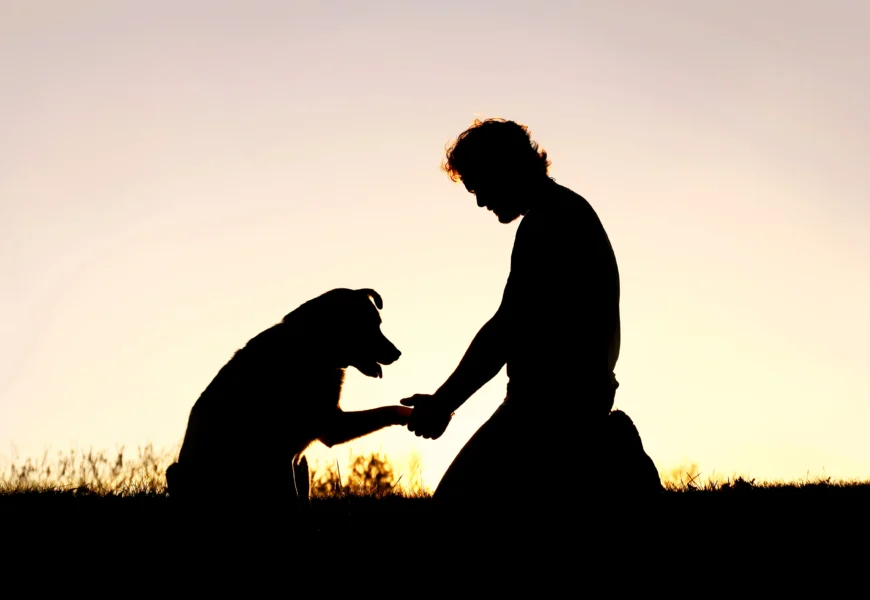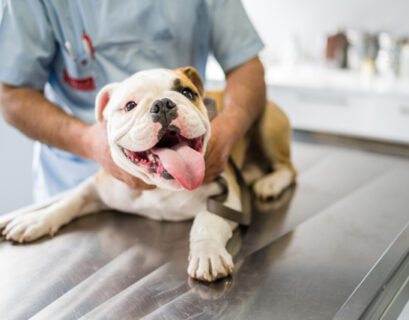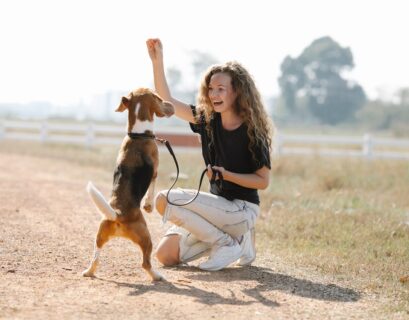Unconditional Love Departed: Navigating the Heartbreak of Pet Loss and Discovering the Path to Healing”
Key Takeaways:
- Losing a pet is deeply emotional and varies for each person.
- Validating feelings and offering support are crucial.
- Rituals help find closure and honor the bond with the pet.
- Different cultures cope with pet loss differently.
- Coping with the loss of service animals and therapy pets is especially challenging.
- Healing involves embracing memories and honoring the pet’s legacy.
- Supporting friends and family means being there and understanding.
- Volunteer and resource options offer help to cope with pet loss.
- Cherishing memories brings healing and hope.
In the tapestry of human emotions, few threads weave as tightly and tenderly as the bond between us and our beloved pets. They come into our lives as loyal companions, bringing joy, comfort, and unconditional love. From playful puppy days to serene sunset years, they become integral to our families, leaving indelible pawprints on our hearts. Yet, when the inevitable time comes to say goodbye, the ache of pet loss can be profound, catching us off-guard with its intensity.
From a fish’s shimmering scales to a feline friend’s velvet paws, the loss of any pet can leave an unmistakable void. But remember, mourning a pet is not a trivial matter; it is a legitimate journey of grief that deserves validation and understanding.
The complexities of coping with the loss of a pet and the maze of emotions that emerge during this vulnerable time. These insights can be a compass in the uncharted waters of loss, whether grappling with your grief or attempting to assist another individual through theirs.
Understanding Pet Loss and Grief: Validating the Depth of Pet Loss Grief and Common Emotional Responses
For many pet owners, the pain of losing a cherished companion can be as profound as losing a close human friend or family member. The bond we share with our pets transcends the boundaries of species, and when they depart from our lives, the grief we experience is both real and powerful. In this section, we delve into the significance of validating the depth of pet loss grief and explore the common emotional responses accompanying this challenging journey.
Validating the Depth of Pet Loss Grief
Those who have not experienced the profound bond that can form between humans and their animal companions frequently misunderstand or minimize grieving the loss of a pet. This misunderstanding can lead some individuals to question the intensity of pet loss grief, inadvertently dismissing or trivializing the pain bereaved pet owners feel.
However, it is essential to recognize that the depth of pet loss grief is valid and deserving of empathy and understanding. Pets are not just animals we share our homes with but are integral to our lives. They offer unwavering love, companionship, and emotional support, providing a sense of purpose and belonging that is difficult to replace. When they pass away, pet owners often feel a deep sense of loss, as if a part of themselves is missing.
The unique relationship between humans and pets can also create a sense of vulnerability. For many, pets offer unconditional love and acceptance, making them trusted confidants in times of joy and sorrow. Losing this source of unwavering affection can leave a void that feels insurmountable.
Pet owners may also experience what is known as “disenfranchised grief,” a term used to describe grief that is not openly acknowledged or socially supported. This can further compound the pain, leaving individuals isolated in their mourning. By validating the depth of pet loss grief, we acknowledge pets’ profound impact on our lives and create a safe space for pet owners to process their emotions openly.
Common Emotional Responses to Pet Loss
The emotional responses to pet loss can be as diverse as the human-pet relationships themselves. Each individual’s journey through grief is unique, but there are common emotional responses that many pet owners experience after the loss of their beloved companions.
Intense Sadness and Mourning: The most prevalent emotion in pet loss grief is profound sadness. The void left behind by a pet’s death can produce intense emptiness and sorrow.
Guilt and Regret: Pet owners often grapple with feelings of guilt and regret, wondering if they could have done more to prevent their pet’s passing or if they made the right decisions regarding their care.
Denial and Avoidance: In the initial stages of grief, some individuals may find it challenging to accept the reality of their pet’s death. They may experience moments of denial or attempt to avoid confronting their emotions.
Anger and Bargaining: The grieving process can also give rise to feelings of anger or a desire to negotiate with a higher power to reverse the loss. Pet owners may question why their beloved companions were taken from them.
Loneliness and Isolation: Losing a pet can create a sense of isolation, especially for those who lived alone with their furry friends. The absence of constant companionship can lead to feelings of loneliness.
Physical Symptoms: Grief can manifest in physical symptoms such as fatigue, appetite changes, and difficulty sleeping. The emotional weight of pet loss can take a toll on one’s overall well-being.
It’s essential to remember that these emotional responses are normal and healthy reactions to loss. Grieving the loss of a pet is a natural process that takes time, and there is no “right” or “wrong” way to grieve. Each person’s experience is valid and should be respected.
Coping Strategies for Dealing with Pet Loss: Navigating the Journey of Grief
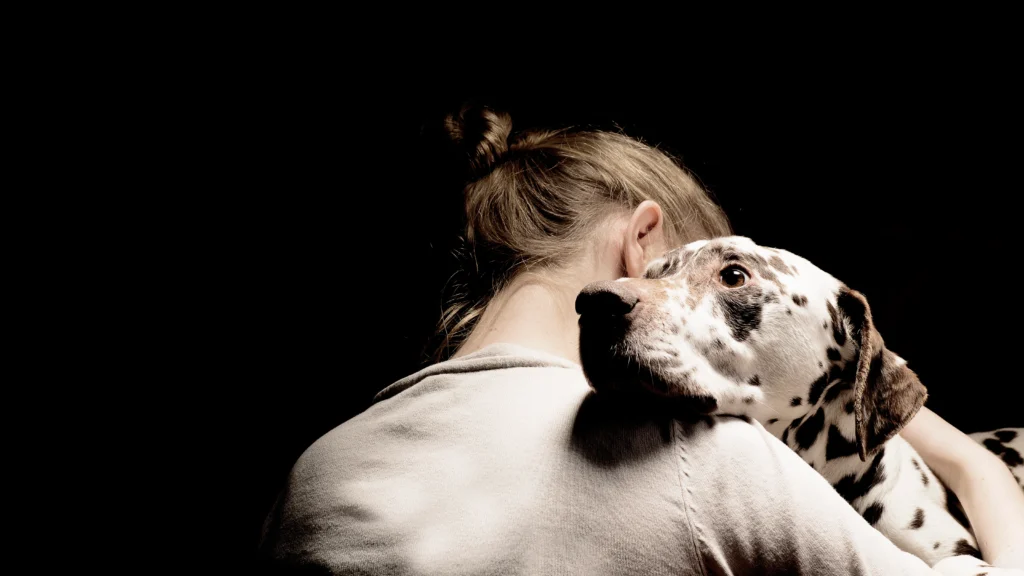
Losing a beloved pet can be an emotionally challenging experience that leaves pet owners feeling heartbroken and overwhelmed. The bond we share with our animal companions is profound, and their departure can leave an irreplaceable void in our lives. While grief is an inevitable part of the process, there are coping strategies that can help individuals navigate the journey of pet loss and find solace in their memories.
Allowing Yourself to Grieve: Recognizing the Significance of the Loss
The first step in coping with pet loss is to acknowledge the significance of the loss and allow yourself to grieve. Some individuals may feel pressured to minimize their emotions or “move on” quickly, but it is essential to permit yourself to mourn. Grieving is a natural response to loss and an expression of the love and connection shared with your pet.
Take the time to honor your feelings and emotions, whether sadness, anger, or guilt. Avoid comparing your grief to others’ experiences or feeling ashamed for mourning the loss of a pet. Remember that each person’s grief is unique, and there is no right or wrong way to grieve.
Seeking Support: Talking to Friends, Family, or Support Groups
One of the most valuable coping strategies for pet loss is seeking support from others who understand the depth of your emotions. Talking to friends, family, or support groups can provide a safe space to share your feelings and memories of your pet. Those who have experienced pet loss themselves can offer empathy and validation, creating a sense of belonging in a community of understanding individuals.
Support groups focused on pet loss can be particularly beneficial, as they offer a platform to connect with others navigating similar emotions. Sharing stories and experiences can provide comfort and reassurance that you are not alone in your grief.
Memorializing Your Pet: Creating Lasting Tributes and Memories
Memorializing your pet can be a healing way to honor their memory and keep their spirit alive in your heart. There are various ways to create lasting tributes and memories:
Create a Memorial: Consider setting up a memorial space in your home or garden where you can place your pet’s collar, favorite toy, or a framed photo. This space can serve as a comforting reminder of the special bond you shared.
Plant a Tree or Flowers: Planting a tree or flowers in memory of your pet can be a beautiful way to symbolize their life and growth. Each time you tend to the plant, you can reflect on the cherished memories you shared.
Write a Letter or Journal: Writing a letter to your pet or keeping a grief journal can help you process your emotions and express your feelings in a private and cathartic way.
Create a Photo Album or Scrapbook: Gathering pictures and mementos in a photo album or scrapbook can be a tangible way to reminisce about your pet’s life and the joy it brings.
Expressive Therapies: Utilizing Art, Writing, or Other Creative Outlets
Engaging in expressive therapies can be a powerful coping mechanism for dealing with pet loss grief. Art, writing, music, or other creative outlets provide an avenue to express complex emotions that words alone may not capture.
Painting, drawing, or crafting can be a therapeutic way to channel emotions and create tangible representations of your feelings. Writing poems or stories about your pet can also be a cathartic means of processing grief and celebrating the bond you shared.
Professional Help: Considering Pet Loss Counselors or Therapists
Sometimes, the grief of pet loss may become overwhelming and challenging to navigate alone. Seeking professional help from pet loss counselors or therapists trained in grief counseling can provide valuable support.
Pet loss counselors are equipped to help individuals work through the complex emotions associated with pet loss. They can offer coping strategies tailored to your unique circumstances and provide a compassionate and non-judgmental space to process your grief.
The Unique Aspects of Pet Loss Grief: Navigating Stigmatization and Ambiguous Loss
The profound bond between humans and their pets creates a relationship unlike any other. Pets become cherished members of our families, offering unconditional love, comfort, and companionship. However, when the time comes to say goodbye to our beloved animal companions, the grief we experience can be as intense as mourning the loss of a human loved one. Despite the depth of emotion, society often stigmatizes and misunderstands pet loss grief. Additionally, the unique nature of pet loss, characterized by the challenges of ambiguous loss, further adds to the complexity of the grieving process. In this section, we explore the distinctive aspects of pet loss grief and shed light on the importance of understanding and addressing these unique challenges.
The Stigmatization of Pet Loss Grief
In a society that may not fully appreciate the significance of the human-animal bond, pet loss, and grief can face stigmatization. Some individuals who have not experienced this profound connection may struggle to empathize with the intensity of pet loss, leading them to downplay its significance. This lack of understanding can leave pet owners feeling isolated in their mourning and hesitant to openly express their emotions for fear of judgment.
Expressions like “It’s just a pet” or “You can get another one” can further perpetuate the stigma surrounding pet loss grief, leaving grieving individuals feeling invalidated in their sorrow. This emotional isolation can add a layer of pain to an already difficult process, making it crucial to recognize and address the stigmatization of pet loss grief.
Promoting empathy and understanding is essential to dispelling the stigma surrounding pet loss grief. Encouraging open conversations about the emotional impact of losing a pet can help create a more compassionate and supportive environment for grieving people. Acknowledging the unique bond between humans and their pets and validating the depth of pet loss grief can go a long way in reducing the stigma associated with this form of loss.
Addressing the Challenges of Ambiguous Loss
Ambiguous loss is a concept that describes a unique type of grief experienced when there is an absence or loss without clear closure or resolution. In the context of pet loss, ambiguous loss arises from the physical absence of the pet while the emotional bond remains intact. Unlike losing a human loved one, where death brings finality and closure, pet loss grief can be characterized by uncertainty and conflicting emotions.
Ambiguous loss can be particularly challenging because individuals may simultaneously experience conflicting feelings of grief and hope. For example, a pet that has gone missing or is lost may leave pet owners yearning for their return while also grieving their absence. Similarly, in cases where a pet’s death is sudden or unexpected, the lack of time to prepare for the loss can lead to shock and disbelief.
Navigating ambiguous loss requires acknowledging and accepting the complexity of the emotions involved. Find ways to honor and preserve the pet’s memory while allowing space for grief and healing. Creating rituals or ceremonies to commemorate the pet’s life, regardless of their absence, can provide a sense of closure and help in the grieving process.
Support from friends, family, or pet loss support groups can be invaluable in addressing the challenges of ambiguous loss. These individuals can offer empathy and understanding, providing a safe space to express the conflicting emotions of pet loss grief.
Helping Children Cope with Pet Loss: Nurturing Emotional Resilience in Times of Grief
Losing a beloved pet is a heart-wrenching experience for adults, but it can be equally challenging for children. The bond between children and their animal companions is often profound, providing them with unconditional love, companionship, and a sense of security. When a pet passes away, children may feel a wide range of emotions, from sadness and confusion to anger and guilt. As caregivers, parents, and educators, it is crucial to support children during this difficult time and provide them with the tools to cope with pet loss in a healthy and nurturing manner. This section explores strategies for helping children cope with pet loss, focusing on communication, emotional expression, and meaningful ways to remember their cherished furry friends.
Communicating the Loss in an Age-Appropriate Manner
When a pet passes away, it is essential to communicate the loss to children in an age-appropriate manner. Younger children may have difficulty grasping the concept of death, while older children may have more profound emotional connections to their pets. Tailoring the communication to the child’s developmental stage is crucial in helping them process the loss.
For younger children, using simple and concrete language can be effective. Avoiding euphemisms like “sleeping” or “gone away” can prevent confusion and potential anxiety about sleep or separations. Instead, explaining that the pet’s body stopped working and they won’t return can be more direct and clear.
Older children may benefit from more detailed conversations about the natural cycle of life and death. Encourage them to ask questions and express their feelings openly. Being honest and acknowledging your emotions can also show them that feeling sad or upset about the loss is okay.
Encouraging Children to Express Their Emotions
Children may not always have the vocabulary to express their emotions verbally, so creating a safe and supportive environment for them to process their feelings is essential. Encourage children to express themselves through various mediums, such as drawing, writing, or play.
Art can be a powerful outlet for emotional expression. Providing children with art supplies and encouraging them to create pictures or crafts that represent their feelings can help them externalize their emotions and gain control over their grief.
Writing in a journal or creating a letter to their pet can also be therapeutic for children. This form of self-expression allows them to share their thoughts and memories, fostering a sense of closure and connection.
Play therapy can also be valuable for younger children. Using dolls or stuffed animals to act out scenes related to the pet’s life or death can help children process their feelings gently and non-directive.
Involving Children in Memorializing Rituals
Involving children in memorializing rituals can give them a sense of closure and a tangible way to remember their beloved pets. Creating a memorial space, planting a tree or flowers in the pet’s memory, or designing a photo collage can be meaningful activities for children.
Encourage children to contribute their ideas to the memorialization process. Allowing them to choose their favorite pictures of the pet, write messages, or pick flowers for a memorial garden can empower them and give them a sense of ownership over the process.
Participating in a memorial service or a small ceremony to say goodbye to their pet can be healing for children. It allows them to share their feelings, express their love, and say their final goodbyes.
Euthanasia and End-of-Life Decisions: Navigating the Difficult Choice and Coping with Emotional Burden
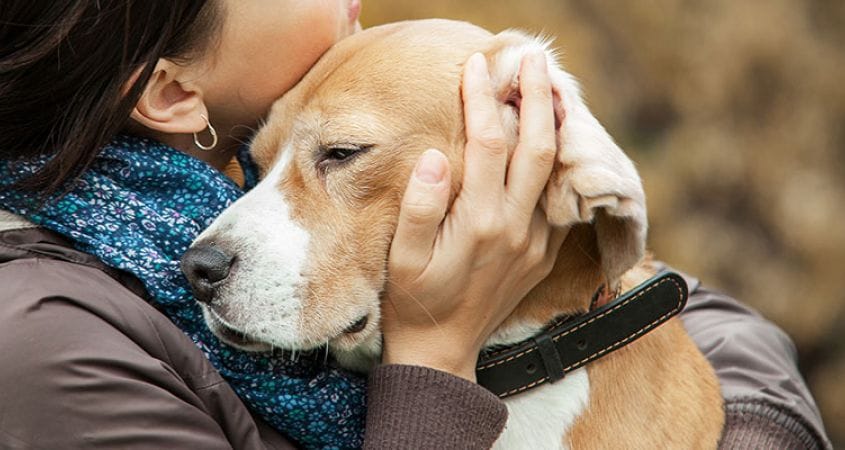
Saying goodbye to a beloved pet is one of the most challenging decisions a pet owner may ever face. As our faithful companions age or become afflicted with serious illnesses or injuries, we are responsible for making end-of-life decisions on their behalf. Euthanasia, the deliberate act of ending a pet’s life to alleviate its suffering, is a heart-wrenching choice many pet owners must make. In this section, we explore the difficult decision of euthanasia and delve into coping mechanisms for dealing with the emotional burden, including feelings of guilt and second-guessing.
Understanding the Difficult Decision of Euthanasia
Euthanasia is a decision born out of love and compassion for our pets. When faced with a terminal illness or debilitating pain, pet owners may have to weigh the quality of life of their beloved companions against their suffering. It is essential to understand that the decision to euthanize a pet is never taken lightly and is made with the animal’s best interests at heart.
Veterinarians play a critical role in guiding pet owners through the euthanasia process. They provide medical expertise and objective assessments of a pet’s condition to help owners make informed decisions. Additionally, they offer emotional support, understanding the profound attachment between owners and their pets.
Despite understanding the reasons behind the decision, pet owners may still experience immense emotional turmoil. Feelings of sadness, guilt, and doubt are common during this process. It is crucial to remember that euthanasia is a compassionate choice that spares pets from unnecessary suffering and ensures a dignified passing.
Coping with Guilt and Second-Guessing
Guilt is a frequent and natural emotional response for those who have chosen euthanasia for their pets. Second-guessing the decision may arise, with pet owners questioning whether they made the right choice or if they could have done more for their furry companions. These emotions are a testament to owners’ love and care for their pets.
Coping with guilt and second-guessing begins with acknowledging and accepting these emotions. Understand that it is normal to question oneself during this difficult time. Allow yourself to grieve and express your feelings without judgment. Talking openly with friends, family, or support groups can provide validation and emotional release.
Remembering that you decided out of love can help ease feelings of guilt. Reflect on the pet’s quality of life and the relief you provided by sparing them prolonged suffering. Recognize that euthanasia is a selfless act that honors the bond you shared with your pet.
Engaging in self-compassion is essential. Be kind to yourself during the grieving process, understanding that you did your best under the circumstances. Forgive yourself for any perceived shortcomings and acknowledge that you acted in your pet’s best interest.
Memorializing your pet and cherishing your shared memories can be a healing practice. Creating a tribute, like a photo album or a memorial garden, can be a tangible reminder of your love for your pet and the joy it brought into your life.
If guilt or second-guessing becomes overwhelming, consider seeking support from a pet loss counselor or therapist. Professional help can offer valuable insights and coping strategies to navigate the complex emotions associated with euthanasia.
Finding Healing and Closure: Navigating Coping Milestones and the Path to Welcoming a New Pet
The journey of pet loss grief is a deeply personal and emotional process. As pet owners navigate the complex terrain of mourning, they may wonder when they will find healing and closure. While the pain of losing a beloved pet never fully dissipates, there are coping milestones that signify progress in the grieving process. Recognizing these signs of healing can bring comfort and assurance that healing is possible. Additionally, knowing when it’s time to consider adopting a new pet is a significant step toward embracing the future while cherishing the memories of the past. In this section, we explore the path to finding healing and closure after pet loss and the considerations when welcoming a new furry companion into your life.
Coping Milestones: Signs of Healing from Pet Loss
Coping with pet loss is an ongoing journey with no set timeline. However, certain coping milestones may signal progress in the healing process:
Acceptance and Acknowledgment: One of the first coping milestones is accepting the reality of your pet’s passing and acknowledging the depth of your grief. This acknowledgment allows you to begin processing your emotions.
Gradual Decreasing of Intensity: As time passes, your pet-related nostalgia and happy memories may replace your intense grief.
Resumption of Daily Activities: As healing progresses, you may find it easier to resume your daily activities and routines. Engaging in hobbies, work, and social interactions can indicate healing.
Ability to Share Memories: Sharing stories and memories of your pet with others without overwhelming sadness is a positive sign of healing.
Honoring Your Pet’s Legacy: As you heal, you may feel inspired to honor your pet’s memory by engaging in meaningful activities or creating a memorial in their honor.
Increased Emotional Resilience: Over time, you may notice a heightened emotional resilience, enabling you to manage triggers and difficult moments more gracefully and with composure.
Remember that healing is a gradual and non-linear process. It’s normal to experience grief waves even after achieving coping milestones. Grief is a testament to the love shared with your pet, and it’s essential to be patient and compassionate with yourself throughout the process.
Knowing When It’s Time to Consider Adopting a New Pet
Deciding to adopt a new pet after losing a beloved companion is a significant step that requires careful consideration. There is no set timeframe for when it’s appropriate to adopt a new pet, as each individual’s grieving process is unique. Here are some factors to consider:
Emotionally Ready: Consider whether you feel emotionally prepared to open your heart to a new pet. Adoption should be a positive and hopeful experience, a way to replace your lost companion.
Grieving Progress: Reflect on your coping milestones and emotional healing. If you have made significant progress in your grief journey, you may be better equipped to welcome a new pet.
Readiness to Bond: Ensure you can form a new bond with another pet. Each animal is unique, and being open to building a new relationship is essential.
Lifestyle Considerations: Evaluate your current lifestyle, daily routines, and living situation to ensure you can provide a loving and stable home for a new pet.
Family Involvement: If you have a family, ensure everyone is on board with adopting a new pet and ready to share the responsibility of pet ownership.
Volunteering or Fostering: If you are still deciding whether to adopt a permanent pet, consider volunteering at an animal shelter or fostering a pet to assess your readiness.
The Role of Rituals and Ceremonies in Pet Loss: Finding Healing and Meaning through Farewell
Losing a beloved pet can be a profoundly emotional experience, leaving pet owners with a sense of grief and emptiness. To honor the memory of their cherished companions and find healing amidst sorrow, many individuals turn to rituals and ceremonies to say goodbye and pay tribute to their furry friends. These rituals hold deep significance, providing a sense of closure and the opportunity to express emotions meaningfully. Additionally, cultural perspectives on pet loss vary globally, with each culture offering unique insights into navigating the grieving process. In this section, we explore the role of rituals and ceremonies in pet loss, understand their significance in finding solace, and examine diverse cultural perspectives that shed light on the universal experience of losing a beloved pet.
The Significance of Saying Goodbye through Rituals
Rituals and ceremonies play a vital role in pet loss, offering a sense of structure and purpose during immense emotional upheaval. These rituals serve as a way to say goodbye to a beloved companion and acknowledge their profound impact on our lives. Some of the significant aspects of rituals in pet loss include:
Closure and Healing: Rituals provide a framework for finding closure and healing. Whether through a memorial service, a private ceremony, or creating a tribute, saying goodbye formally can facilitate the grieving process.
Expressing Emotions: A variety of emotions, ranging from sadness and grief to gratitude and joy for the shared memories, can accompany pet loss. Rituals create a safe space to express these complex emotions and honor the love shared with the pet.
Recognizing the Bond: Pet rituals highlight the special bond between humans and animals. They affirm the importance of the human-animal connection and the meaningful role pets play in our lives.
Creating Lasting Memories: Rituals allow us to create lasting memories of our pets. They allow us to celebrate their lives, personalities, and the joy they bring into our hearts.
Honoring Their Journey: Saying goodbye through rituals acknowledges the journey of our pets from companionship to a place of eternal rest. This acknowledgment can provide comfort in knowing that their suffering has ended.
Coping with the Loss of Service Animals and Therapy Pets: Navigating the Profound Bonds and Emotional Impact

Service animals and therapy pets play invaluable roles in the lives of their handlers and owners. They offer unwavering support, assistance, and comfort, making a significant difference in the daily lives of those they serve. The loss can be particularly profound when these remarkable animals pass away, as it is intertwined with a unique bond and a deep emotional connection. In this section, we explore the complexities of coping with the loss of service animals and therapy pets, recognizing the special relationships they form with their handlers and owners and the emotional impact their departure can have.
The Unique Bond between Service Animals and Their Handlers
The bond between service animals and their handlers is extraordinary and built on trust, loyalty, and dependency. Service animals, such as guide dogs for the visually impaired or assistance dogs for individuals with disabilities, play a crucial role in enhancing their handlers’ independence and quality of life. This bond goes beyond a typical pet-owner relationship, as service animals are trained to understand and respond to specific needs and commands.
The loss of a service animal can be particularly painful for the handler because they lose not only a friend but also a crucial support system component. These animals are constant companions, providing emotional and physical assistance, and their departure leaves a profound void in the handler’s life.
To deal with the loss of a service animal, one must navigate the complexities of grief and acknowledge how much the animal’s presence has impacted the handler’s life. The grieving process may include feelings of loss, sadness, and even uncertainty about how to move forward without their loyal companion. Recognizing the unique nature of the bond between service animals and their handlers is crucial to validating the depth of the handler’s grief and providing support during this difficult time.
Recognizing the Emotional Impact of Losing a Therapy Pet
Therapy pets bring comfort, joy, and emotional support to individuals in various settings, such as hospitals, nursing homes, schools, and counseling centers. Their gentle presence can ease anxiety, reduce stress, and promote emotional healing. The relationships formed with therapy pets are based on empathy and non-judgmental companionship, providing a safe space for individuals to express their emotions freely.
When a therapy pet dies, the emotional impact can be significant for those who have benefited from their comforting presence. For individuals receiving therapy or counseling with the support of these animals, the loss may feel like saying goodbye to a trusted confidant and a source of solace.
Coping with the loss of a therapy pet involves acknowledging their impact on the emotional well-being of those they served. Clients or patients may experience various emotions, including sadness, grief, and loss. Therapists and caregivers who work closely with therapy animals should be prepared to provide support, understanding, and empathy during this time.
Conclusion
Losing a beloved pet is an experience that touches the deepest corners of our hearts, leaving an indelible mark on our lives. Throughout this article on “Pet Loss and Grief: Coping with the Loss of a Beloved Pet,” we have explored the profound emotions, challenges, and coping mechanisms accompanying this unique form of loss. As pet owners and animal lovers, we understand the immeasurable bond we share with our furry companions, and the pain of saying goodbye is a testament to the love and connection we have cherished.
In navigating pet loss grief, we discovered the significance of acknowledging and validating the depth of our emotions. The grieving process is a complex journey involving various stages, from denial and sadness to acceptance and healing. Embracing our memories of beloved pets is essential to finding solace and cherishing the beautiful moments we share. Whether through rituals, ceremonies, or creating lasting tributes, these actions help weave the tapestry of our pets’ lives into our own fabric.
It’s important to understand the unique aspects of pet loss. From the stigmatization and ambiguity surrounding the loss to the profound impact on children and the complexities of end-of-life decisions, we gained insight into the diverse facets of coping with the loss of a beloved pet. Recognizing the emotional significance of service animals and therapy pets highlighted their essential roles in our lives, serving as loyal companions and sources of healing.
On the journey of healing and resilience, we explored coping strategies and support systems that can aid in navigating the path of grief. From allowing ourselves to grieve and express emotions creatively to seeking professional help and considering adopting new pets, we discovered ways to honor our love for our departed companions while embracing hope for the future.
Through the lens of cultural perspectives on pet loss, we found that love for animals transcends boundaries, connecting us to a universal experience of compassion and empathy. The memories of our beloved pets serve as bridges that unite us in our shared understanding of the joy and sorrow they bring into our lives.

